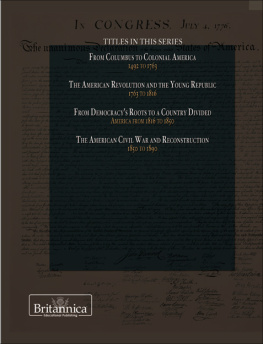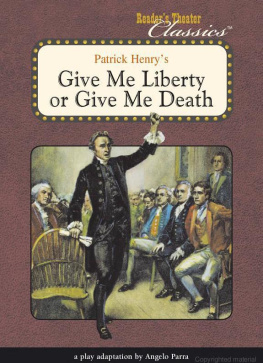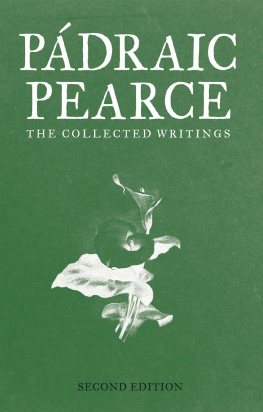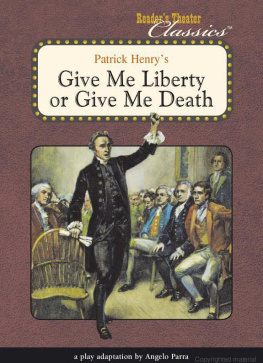Barakaldo Books 2020, all rights reserved. No part of this publication may be reproduced, stored in a retrieval system or transmitted by any means, electrical, mechanical or otherwise without the written permission of the copyright holder.
Publishers Note
Although in most cases we have retained the Authors original spelling and grammar to authentically reproduce the work of the Author and the original intent of such material, some additional notes and clarifications have been added for the modern readers benefit.
We have also made every effort to include all maps and illustrations of the original edition the limitations of formatting do not allow of including larger maps, we will upload as many of these maps as possible.
THE COMING OF THE REVOLUTION1763-1775
BY
LAWRENCE HENRY GIPSON
TABLE OF CONTENTS
Contents
TABLE OF CONTENTS
REQUEST FROM THE PUBLISHER
Illustrations and Maps
These illustrations, grouped-in a separate section, will be found following page 144.
1. George III as a young King
2. William Pitt, Earl of Chatham
3. The Earl of Shelburne
4. Lord Rockingham
5. William, Earl of Dartmouth
6. Francis Bernard, governor of Massachusetts
7. Thomas Hutchinson, governor of Massachusetts
8. Lord North, First Lord Commissioner of the Treasury
9. The Right Honorable George Grenville
10. The Governor Hutchinson town house in Boston
11. Landing of the British troops at Boston on September 30, 1768
12. Samuel Adams
13. Patrick Henry
14. John Adams
15. James Otis
16. The Repeal or the Funeral Procession of Miss Americ-Stamp, a cartoon
17. The Deplorable State of America or SCH Government
18. A view of New York from the northwest, about 1772
19. A plan of New York as of 1767
20. The Bloody Massacre...in Kings Street Boston on March 5 th , 1770
21. Benjamin Franklin
22. The Colonies Reduced and Its Companion
23. John Dickinson
24. The Bostonians Paying the Exciseman, or Tarring & Feathering
25. A plan of Philadelphia about the year 1761
26. The Balance Master
27. The Hydra
28. A Society of Patriotic Ladies at Edenton in North Carolina
29. The Alternative of Williams-Burg
30. The Wise Men of Gotham and their Goose
MAPS
MEMBERS TO GENERAL CONGRESSES, 1754-1765
BRITISH POSSESSIONS IN NORTH AMERICA, 1765
BRITISH POSSESSIONS IN NORTH AMERICA, 1775
MEMBERS TO GENERAL CONGRESSES, 1774-1775
Editors Introduction.
DURING the past half century the lapse of time and the uncovering of much new evidence have made it possible for scholars to pursue their investigations into the causes of the American Revolution in an atmosphere far less partisan than had prevailed in earlier generations. As a result of this more objective handling of the period of mounting tension that preceded the War of Independence, the rights on both sides of the controversy are more generally conceded.
Most historians agree today that the British government was justified in calling upon the colonies for a larger contribution to the imperial program than they had made prior to the Peace of Paris of 1763, but affirm the correctness of the colonial position in labeling the governments program after that year an infringement of that substantial measure of self-government which the colonists had achieved for themselves over a period of a century and a half. No longer is George III portrayed as a wicked, designing man. However, by establishing himself at the center of British politics and breaking with the Old Whigs, the monarch is viewed as having failed to serve as a symbol of imperial unity. British-American relations foundered on the rock of the conservatism of the King and his supporters, but this conservatism provided the ultimate base for a new Tory party.
The complex and varied aspects of imperial relations on the eve of the Revolution are carefully explored by Dr. Lawrence H. Gipson in this volume. His multivolume study, The British Empire Before the American Revolution, has abundantly demonstrated the authors profound knowledge of the sources, his insights into the complex issues of the day, and his ability to treat these events with balance and objectivity. To Dr. Gipson the Revolution marks the culmination in America of the twin forces of federalism and nationalism. The author sees no basic clash between England and her colonies over commerce or church policy or westward expansion. To him the forces of federalism and nationalism were irreconcilable with the outmoded system of imperial relationships upon which the old British Empire had been founded.
This volume is one of The New American Nation Series, a comprehensive co-operative survey of the history of the area now known as the United States, from the days of discovery to the mid-twentieth century. Since the publication a half century ago by the House of Harper of the American Nation series under the editorship of the distinguished historian, Albert Bushnell Hart, the scope of history has been broadened and a new approach has been developed to deal with the problems of historical interpretation and presentation. The time has now come for a judicious appraisal of the new history, a cautious application of the new techniques of investigation and presentation, and a large-scale effort to achieve a synthesis of the new findings with the traditional facts, and to present the whole in attractive literary form.
To this task the New American Nation Series is dedicated. Each volume is part of a carefully planned whole, and coordinated with other volumes in the series; at the same time each volume is designed to be complete in itself. Some overlapping is doubtless inevitable, but it has seemed to the editors that overlapping is less regrettable than omissions, and from time to time the same series of events and the same actors will be seen from different points of view. While for the most part the series follows a chronological organization, separate volumes or groups of volumes will be devoted to cultural history, constitutional history, and foreign affairs.
HENRY STEELE COMMAGER
RICHARD BRANDON MORRIS
Preface
THIS volume is concerned with the revolutionary movement within the thirteen American continental colonies during the period that extended from the Peace of Paris of 1763 to the outbreak of open hostilities between Great Britain and these colonies in 1775. Other volumes in The New American Nation Series will treat the social and cultural aspects of the period, as well as colonial culture and trans-Appalachian developments, which have not been covered herein. The controversy over the project to appoint an American bishop for the colonial Anglican establishment has been treated rather fully in Alice M. Baldwins The New England Clergy and the American Revolution (Durham, N.C., 1928) and in the late Arthur Lyon Crosss The Anglican Episcopate and the American Colonies (New York, 1902). Neither study provides any evidence that the controversy contributed measurably toward arousing colonial hostility against the government of Great Britain, which was in fact opposed to the appointment of an American bishop. Nonetheless, many of the New England clergy continued to lash what was really a dead horse. As to the West, I have at length reached the same conclusion that Professor Abernethy set forth in his Western Lands and the American Revolution (Charlottesville, 1937), namely, that the fundamental causes for the American Revolution are not to be found specifically in the Proclamation of 1763 or in the activities of various groups either seeking to lay their hands on western lands or hoping to erect new western colonies, or in the measures taken by the Grown in an effort to control the western Indian tribesfar-reaching as was the indirect influence of these developments upon British colonial policy.









